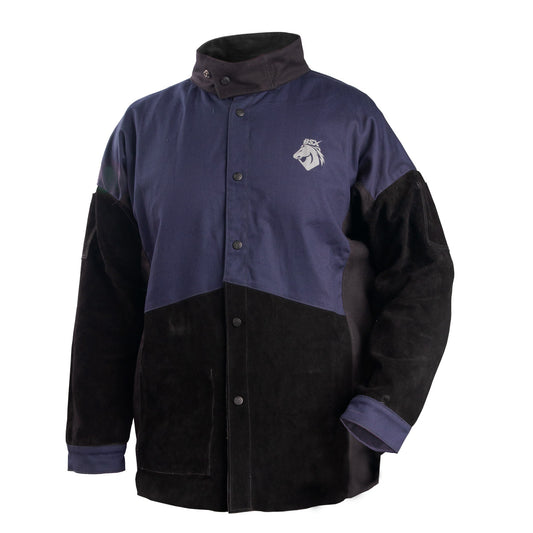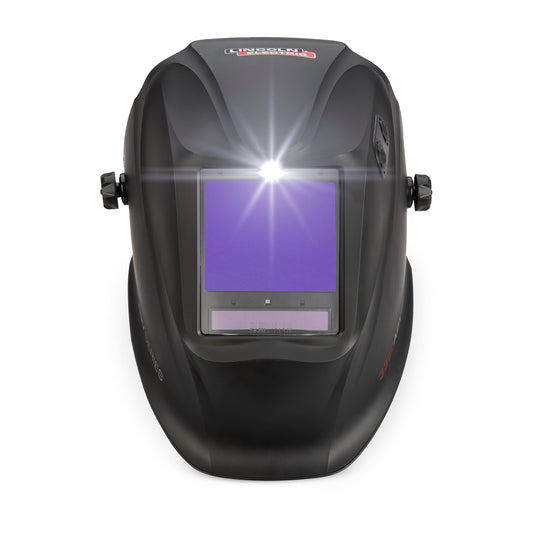Welding is growing in popularity around the country. For both hobbyists and professionals, welding is a way to feel fulfilled, accomplished, and to work with your hands to produce something creative. But, as well-known as it has become, deciding which welding process is right for you is just the first hurdle.
Whether you want to weld as a career or just as a hobby, this article will outline how to start, the materials you need, and what you need to develop your skills.
Why Welding?
Choosing to weld as a career or a pastime may not be your first choice. There are a lot of materials and some equipment you’ll need to get started, and isn’t exactly a “pick up and go” type of activity. But, what welding sometimes lacks in transparency, it makes up for in returns.
As a career path, welding is a secure, well paying, and expanding industry for anyone to get into. Welders are needed everywhere. From cars and trucks to bridges and roads, welding is an essential and often overlooked aspect of automotive, technological, construction, and other projects.

As a hobby, the returns are a bit less monetary. Artists, mechanics, hobby repair DIYers, and craftspeople take up welding as a way to express themselves creatively, and to save some coin on repairs. Whether it’s your kid’s bike or something your partner found on Pinterest, a background in welding can definitely save you some cash when the need arises.
How to Start Welding: What You Need
The question of how to start welding begins with a few necessary items. There are certain things you need to get started.
First, you’ll need to choose what welding process suits your needs best. There are several different types that require different components. Keep in mind too, that some welding processes will be easier for a novice welder than others. Each process has benefits that depending on the availability of welding supplies around you could be more ideal than another. Briefly, here are a few of the most popular and widely accessible options.
Types of Welding
There are a ton of different types of welding. Each style may differ due to the type of electrode, heat generator, shielding, or any other complex reason. For our purposes, we’re going to keep it a bit simpler. To answer the question of how to start welding, you’ll have to choose one.
- MIG (Metal Inert Gas) Welding or Wire Welding: An easier type of welding for beginners. A MIG welding gun will feed wire when you hold down the trigger, and it can run various wire sizes or diameters through it to match up with the weight of your project. Can be used to join pieces of sheet metal together and can be applied to thicker materials up to ½”. This process can offer some flexibility because you can choose to weld with an Argon/Mix gas or without gas using a self-shielded wire (flux-cored). Generally less expensive than TIG welding, which is great for DIYers or hobby enthusiasts.
- Stick Welding: Stick welding is one of the more common welding methods, and is widely considered to be a more traditional type of welding. This process will employ a heavy duty stick electrode holder, sometimes known as a “stinger”. A bit harder to master than MIG welding, stick welding is the process of filling a weld joint with a metal electrode or “stick,” which melts to combine with the workpiece. This is usually the cheapest welding process as it does not require any gas coverage on the weld. As far as machine longevity goes, stick welding machines have less moving parts and tend to need less service work over its operational life.
- TIG (Tungsten Inert Gas) Welding: Many welders consider TIG to be the most “beautiful weld.” TIG welding involves holding a straight cut of filler metal alloy in one hand, and the arc-striking electrode in the other hand. The electrode will be inside an ergonomic TIG torch. The is hands-down the most difficult welding technique to learn. TIG welding is known for its precision and looks. The precision of the weld comes from the welder being able to control the welded filler metal or “bead” more than any other process. If you have ever heard another welder talk about “stacking dimes”, they were likely referring to a pretty TIG weld. Most times, there’s no grinding down the weld, and the bead is nice and smooth if done well. The only con of TIG welding is “short run, high technical.” This means that you can do very precise welds for a short amount of time. We recommend TIG Welding for more technical welds. You will often see it employed in the automotive or food-service industries.
- Oxy/Fuel Welding: This type of welding has generally been replaced by TIG welding, but is one of the more traditional types of welding. Gas welding requires oxygen and a fuel gas, most often acetylene, to act as the heat source for the torch. The main downside of this type of welding is that you need to have two sources of highly flammable gases nearby. But, it’s definitely a cheap and versatile option depending on your preference.

Welding Supplies

Once you’ve chosen your preferred type of welding, you’ll need your supplies. Now, there are some supplies that you’ll need regardless of the type of welding you’ll be doing. These are mostly for your safety, but also make your welding job much easier and more convenient.
Here’s what you’ll need:
- A Welding Jacket: To protect from the metal slag and any sparks coming off of the project.
- A Welding Helmet: To protect your eyes from the blinding light of the weld, and your face from sparks and heat.
- Welding Gloves: To protect your hands from the heat and sparks as you weld.
- An Angle Grinder: To prepare your metals prior to welding and most importantly to clean up your welds while completing any finishing work.
- A Pair of Welding Pliers: To pick up and adjust your workpiece. After welding, the metal will be very hot and difficult to move.
The reason to choose your preferred type of welding first is to make sure you buy the right welder. Each welding style requires its own type of welder, which are made by various different companies including Miller, ESAB, Lincoln and Fronius.
You’ll need to choose your welder based on the type of welding you prefer. The types of welding we mentioned earlier (MIG, TIG & Stick) each have their own models. However, another option has become much more popular over the years for both professionals and hobbyists.
Multiprocess Welders are welders that can handle two or three welding processes all built into the same unit. Whether you need the precision of TIG welding or prefer stick welding for particular projects, you don’t need to buy entirely new welders to get the job done. This has been very beneficial to the weekend warriors when it comes to saving shop-space with one machine while still having the flexibility to take on all types of projects.
These welders are becoming more and more popular as hobbyists take up the trade. While professionals generally stick to one welding style due to their training and certifications, DIYers may want to try new things, or prefer different styles when working with different metals or on various projects.

Whether you’re entering the trade as a professional, or are looking for a new hobby, welding is a great and versatile skill to have. With this guide, you should have everything you need to give welding a shot.


